Tess Maunder – 2 August, 2014
Aileen Burns: We are a part of generation who is aware that it is very likely that our generation won't do better than our parents. I think it is part of our coming to understand what the long-term affects of our working lives may be. Also since the years of the economic crisis, artists have always had to work under flexible conditions. All the terms used to describe the ‘ideal worker' of the new millennium are now are terms were previously used to prescribe to the life or work of an artist.
A conversation about The Working Life at the Institute of Modern Art, Brisbane.
The exhibition was curated by Aileen Burns and Johan Lundh, the two IMA directors
Participants: Darius Mikšys, Aileen Burns, Johan Lundh and Tess Maunder
Tess Maunder: How did the exhibition The Working Life begin?
Johan Lundh’ & Aileen Burns: In 2009 we were in New York when the financial crisis happened. All the works in The Working Life are works which we have encountered since that moment.
TM: Why did you decide to work on this exhibition for Brisbane audiences?
JL: The same language being used for economies contracting elsewhere in the past, we heard being used on Australian news.
AB: Yes, that same language and the same expectation of job security, social benefits, subsidised industries; that kind of language and the anxiety around employment that we had seen in Europe was now being employed too in Australia. Furthermore we realised what was happening was not a normal recession, but actually the ‘new’ normal. It was a perpetual crisis, a catastrophe.
JL: To return to your previous question: the research for the exhibition specifically began in 2009, when Andrea Fraser and Superflex were beginning to be shown in a British context - we felt it was a moment. As we moved forward it became clear that the exhibition was about labour conditions. In a world where we don’t have ups and downs in the economy, when companies outsource and close down in a blink of an eye, artists are asking what does that do to labour conditions? In a world with no economic stability, in a world where there is no way of knowing what will happen six months from now, how do people make a living? How do you plan for the future? The government is cutting arts funding by 30% overnight and there is no long-term consideration - they are not promising money tomorrow. They are just saying we have less money, demonstrating that in fact this condition is the new normal.
AB: I would say that there are two things on top of that: one of them is that we are a part of generation who is aware that it is very likely that our generation won’t do better than our parents. I think it is part of our coming to understand what the long-term affects of our working lives may be. The second thing is that since the years of the economic crisis, artists have always had to work under flexible conditions. All the terms used to describe the ‘ideal worker’ of the new millennium are now are terms were previously used to prescribe to the life or work of an artist.
AB & JL: I think we can see this in your work Darius, in the way you look at immortality, and through you asking at what point do you know that you’re an artist? I think what it means is that it has always been a bad time to be an artist, but it is definitely not the time right now. It is very precarious and uncertain for somebody growing up wanting to be an artist.
Darius Mikšys : Being a freelancer was being able to dispose some of your resources freely, to have some sort of really different schedule - and now currently we are all similar, artists or not. For the moment artists have experienced this shift within their lifetime.
JL: But I think also in a way that is also what Superflux is trying to say through their work The Working Life. We have all been told that the only way forward is through the individual and the individualistic pursuit of one’s own dreams as an entrepreneur. I think the Superflex work - even though it’s a singular voice - it’s about collective action. It’s about if we all lock ourselves in the bathroom, everything will fall apart very quickly. If we collectively stop producing and stop being responsible and paying our mortgage on time, the whole economical system would collapse very rapidly.
Also, there is a sense of community in both Jesse Jones’ work in pointing towards family ties, and in Darius’ work. Being an artist is your own choice but it is not a choice that you make on your own. You need to ask for your parents’ support, you may have to ask for state support, which is another type of family in a sense. The modern entrepreneur-orientated person likes to think that they can be without that - we can all just pursue our own happiness - but the reality is that usually there are a lot of people involved who allow an individual to pursue their own ambitions. Labour is about interconnectivity, very few people work in solitude; even artists in a studio making work know that someone will see their work at some point.
TM: How does this exhibition relate to other curatorial models internationally, do you think Aileen and Johan?
AB: Insofar as it is trying to unpack something about a moment, I think this is a trend in group exhibition/practice internationally. However, I think The Working Life is unusual in it’s specificity of the media. It is video and performance that is very unusual for us and our own curatorial history. Our exhibitions are usually much more varied in terms of media. Furthermore, for a number of works in the show their real ambition is to evoke criticality in the viewer.
TM: And how do you describe your approach to exhibition-making and working with artists?
AB: We tend to work with the same people again and again, so we work with people in a group show and then invite them back to make a new work, or to make a bigger solo exhibition.
JL: Yes, we see our roles as having a commitment to, we like working with artists again and again in a way to have long-term commitment to their practice. It’s about supporting a practice, much more than just a singular work. You know, you see a lot of curators doing it and it…
TM: Instrumentalilises practice?
JL: Yes, and I think artists become very frustrated with this approach to curating. You know because an artist might be asked to show one work over and over and over again, which may not be very helpful for their career or even audience.
DM: I agree, I think with my work it is about measuring it as a work that keeps going on and on and that’s the point.
AB: Darius, have your parents ever participated in the workshop?
DM: Yes, twice!
TM: Darius, what do you anticipate happening during your artist meetings?
DM: It is not a very tightly controlled event. I expect that the parents will come and we will start talking about some things that are not necessarily mentioned in the outline that we sent to them when we invited them to attend the event. The main threads of the work could emerge later through the discussion. So they shouldn’t necessarily be attacked in person.
TM: You are constructing a situation?
DM: Yes, I am the moderator but only until it is enough for the conversation to flow freely. So I will not always try to direct the conversation. I have adopted this approach because there will be a lot of wisdom within the group that I want to draw from and not necessarily dictate myself. It is a complicated and rather difficult thing to produce. Of course you always prepare for a disaster because perhaps no-one will say anything and make a contribution.
TM: Does that ever happen?
DM: No, on the contrary it’s been the opposite, but I still worry.
AB: Have you ever had problems with artists themselves about being involved?
DM: That hasn’t ever happened, but I would completely understand it if that did, it’s a very personal process. In my work, it’s about making the parents feel like they are part of the art experience in their children’s lives, or visa versa.
JL: We did approach someone who said they would prefer it if their parents were not present. I think another thing about the show is the relationship between public and private. All of the works in the exhibitions are depicting semi-private scenarios.
Tess Maunder
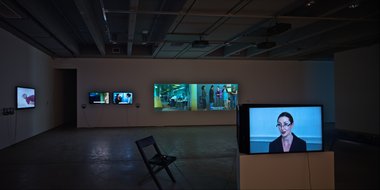
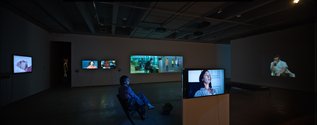
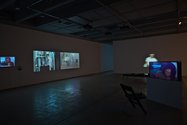
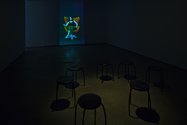
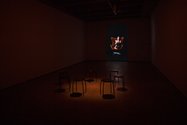
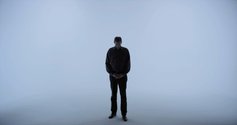
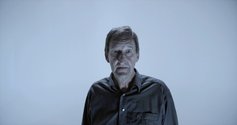
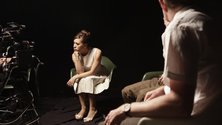
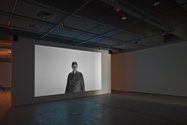



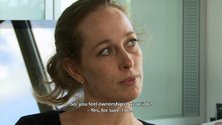
 Advertising in this column
Advertising in this column Two Rooms presents a program of residencies and projects
Two Rooms presents a program of residencies and projects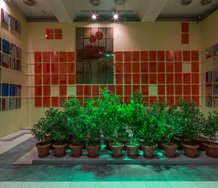
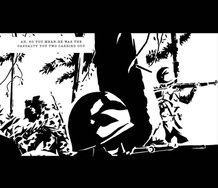
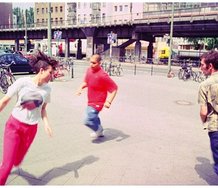
This Discussion has 0 comments.
Comment
Participate
Register to Participate.
Sign in
Sign in to an existing account.